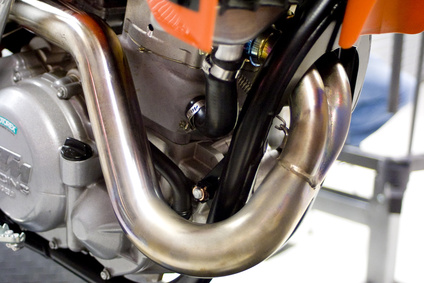
When you must bend a tube yourself because a prebent pipe for your project isn’t readily available, a tube bender comes in handy. Whether you need to bend electrical conduit or need a bend in tubing for an exhaust pipe or a cooler pipe, some tips on bending tubing with a tube bender can make the job easier.
If you want to bend steel tubing, use a hydraulic or mechanic mandrel tube bender. To support the metal, you can use your own home-made mandrel support. Close one end of the tube with several layers of duct tape, fill it with water and add sand. Remove air bubbles by tapping the tube with a hammer. When it is filled with sand, cover the other end with duct tape too. Such an interior support will ensure the tube won’t crimp, the interior will not deform and the bend will come out even. This method can also be used for bending aluminum tubes, which generally do not bend well. However, do not use the wet sand method when bending a pipe with heat since the heat will turn the water into steam and might burst the pipe.
Spring benders work best on copper tubes since copper tubes are soft and easy to bend. An internal bending spring is a simple tool, but it does the job. When bending pipe with an internal bending spring, attach a string to the spring so you can easily remove it again after the bend is completed. External bending springs work well for tubes with a diameter of 6 to 10 mm. Insert the tube into the spring and bend. The spring keeps the wall of the tube from distorting. The external spring removes easier when you rotate it while pulling it off. If another bend in the same tube is needed, instead of taking off the external spring, move it to the place where the next bend should be.
If you only occasionally need a hydraulic bender, you can rent one instead of purchasing it. When you bend a tube with a hydraulic bender, take care to use the correct size former and bending roller since each only bends one size of pipe. Always measure from the center of your tube since the tube will be secured at one end. That way, you are sure to get the bend in the correct position. Move the lever of the bender in one smooth motion until you have the desired bend. The tube will spring back a little when the pressure is released, but don't over-bend because undoing an over-bend is difficult.